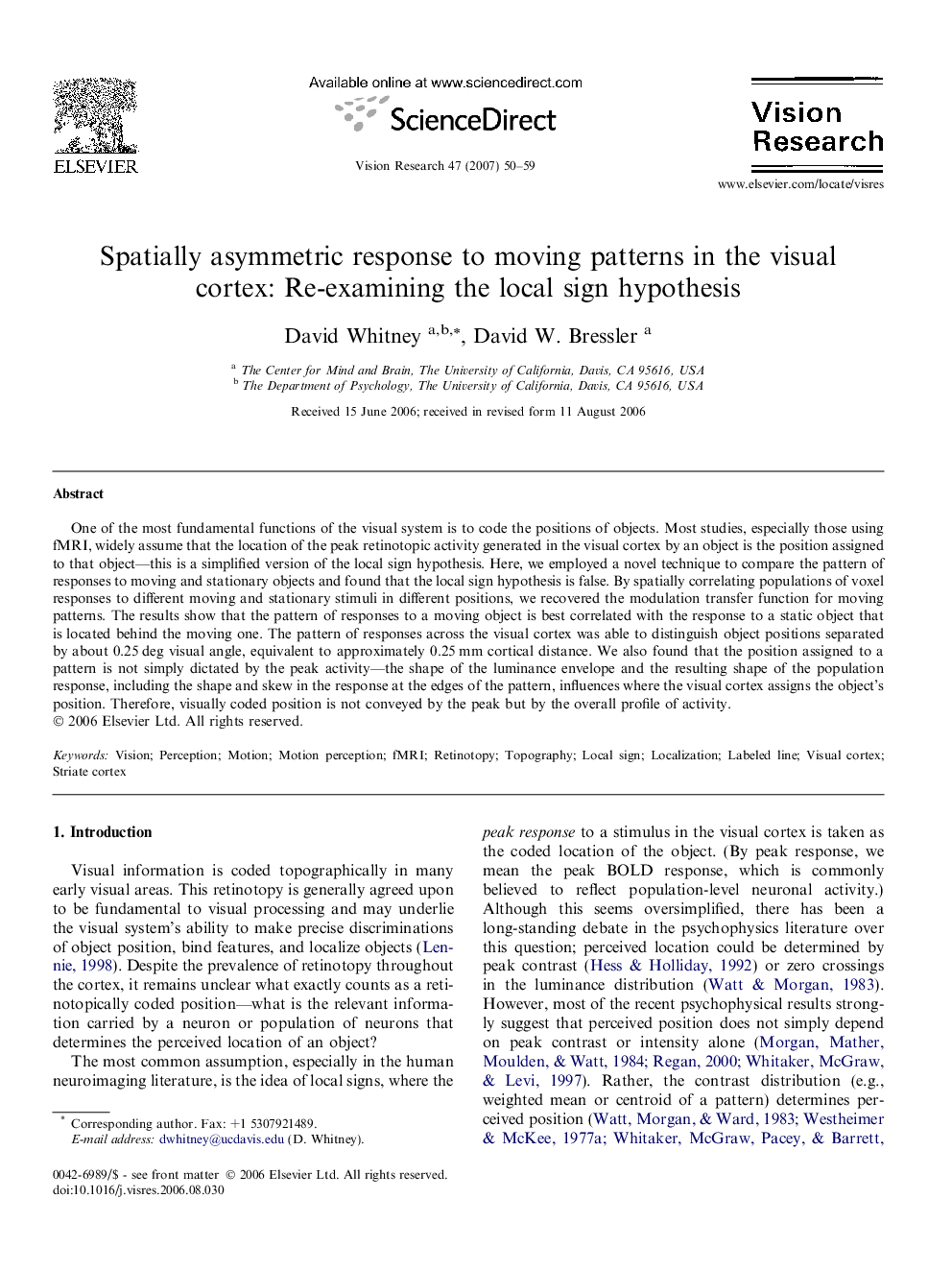| کد مقاله | کد نشریه | سال انتشار | مقاله انگلیسی | نسخه تمام متن |
|---|---|---|---|---|
| 4035812 | 1263550 | 2007 | 10 صفحه PDF | دانلود رایگان |

One of the most fundamental functions of the visual system is to code the positions of objects. Most studies, especially those using fMRI, widely assume that the location of the peak retinotopic activity generated in the visual cortex by an object is the position assigned to that object—this is a simplified version of the local sign hypothesis. Here, we employed a novel technique to compare the pattern of responses to moving and stationary objects and found that the local sign hypothesis is false. By spatially correlating populations of voxel responses to different moving and stationary stimuli in different positions, we recovered the modulation transfer function for moving patterns. The results show that the pattern of responses to a moving object is best correlated with the response to a static object that is located behind the moving one. The pattern of responses across the visual cortex was able to distinguish object positions separated by about 0.25 deg visual angle, equivalent to approximately 0.25 mm cortical distance. We also found that the position assigned to a pattern is not simply dictated by the peak activity—the shape of the luminance envelope and the resulting shape of the population response, including the shape and skew in the response at the edges of the pattern, influences where the visual cortex assigns the object’s position. Therefore, visually coded position is not conveyed by the peak but by the overall profile of activity.
Journal: Vision Research - Volume 47, Issue 1, January 2007, Pages 50–59